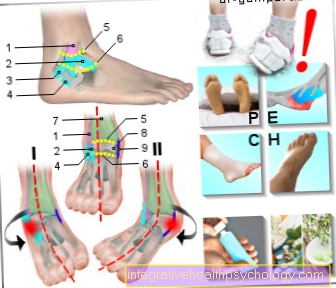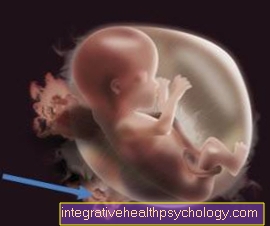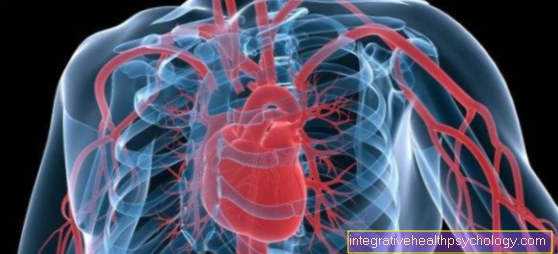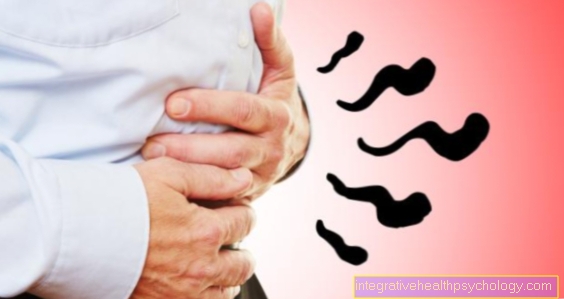The Quincke edema
What is Quincke's edema?
Quincke's edema, which is also called "angioneurotic edema"or angioedema is an acute swelling of the skin and mucous membrane. This can sometimes affect the subcutaneous tissue and the subcutaneous fat.
It is an acutely occurring and non-painful swelling that can have both allergic and non-allergic causes.
Quincke's edema is not an independent clinical picture, but rather a kind of symptom complex that can occur in the context of various diseases and allergies.

Causes of Quincke's Edema
Quincke's edema can have different causes. But how does Quincke's edema develop?
The various causes of Quincke's edema have in common that they lead to fluid shifting into the tissue. This creates a swelling.
The exact development process is complex and includes various messenger substances. The messenger substances histamine and bradykinin play a key role in its development. Depending on the specific cause, other important enzymes and messenger substances are added.
One possible cause of Quincke's edema is an allergic reaction. A wide variety of allergens, such as nuts, seafood or insect poisons, can be used as triggers. The allergic Quincke edema is mainly caused by the messenger substance histamine.
Non-allergic causes must be distinguished from allergic Quincke edema. Drugs that lower blood pressure, such as ACE inhibitors and, more rarely, AT-1 blockers, can be the cause. The commonly prescribed drug acetylsalicylic acid can also cause Quincke's edema.
Quincke's edema can rarely also occur in the context of tumor diseases, especially malignant lymphomas.
If the edema develops for no apparent cause, it is called idiopathic angioedema. Hereditary Quincke edema is distinguished from these acquired causes. This is a congenital metabolic disorder that can be genetically inherited. The disorder is based on decreased production or malfunctioning of the protein C1 esterase inhibitor. This protein has an important regulatory influence in various metabolic pathways. If its activity is reduced, more fluid can leak into the connective tissue and thus cause the typical swellings in the context of Quincke's edema.
Read more on the subject here: Hereditary Quincke edema
Stress as a triggering factor
Hereditary or idiopathic Quincke edema can have very individual triggers. It is therefore very important to find out in what situations the edema occurs in order to prevent it, if possible. Some sufferers describe an increased incidence of Quincke's edema with emotional or psychological stress.
Physical stress, especially in the form of surgery, can also be a trigger.
Patients with hereditary Quincke edema therefore usually receive long-term drug prophylaxis. It is advisable to avoid individual triggers and pay more attention to symptoms
Localization of Quincke's edema
Quincke's edema of the eye
Quincke edema can in principle occur anywhere on the body. What is noticeable, however, is a specific pattern of distribution of the swellings, which leads to a characteristic appearance of those affected. It seems to be particularly affected areas where there is a low tissue resistance. These include the eyelids, among others.
Depending on the extent and severity of the edema, the lids swell to a greater or lesser extent, which can impair vision.
In the maximum case, the eyes cannot be opened due to the severe swelling. In rare cases and if treatment is not taken, the increased pressure can cause injuries to the eyes.
Find out more about the topic here:
- Edema of the eye
- Swollen eyelids.
Quincke's edema on the lip
Another typical localization of Quincke's edema is the lips. Only the lower or upper lip or the entire lip can be swollen.
The severe swelling leads to a characteristic appearance of those affected, which usually makes the diagnosis of Quincke's edema a visual diagnosis.
Depending on the extent, the swelling can make speaking difficult. Additional swelling of the larynx can lead to life-threatening shortness of breath.
Read more about this topic here: swollen lips
Quincke's edema on the face
The typical locations of Quincke's edema are on the face. Usually individual areas such as the eyelids or lips are swollen, but the entire face can also be affected.
This leads to the fact that those affected have a characteristic, disfigured appearance.The diagnosis of Quincke's edema can therefore usually be made based on the typical facial expression.
Further information on this topic can be found here: Swelling of the face.
Quincke's edema on the tongue
The swelling of the tongue as part of Quincke's edema can lead to life-threatening complications. If the tongue is very swollen, it can obstruct the airways and cause dangerous shortness of breath.
The tongue is also one of the common and typical locations of Quincke's edema. If the swelling is severe, the tongue hangs out of the person's mouth. The language is typically lumpy and difficult. Additional swelling of the larynx increases the shortage of breath and requires immediate medical treatment.
Find out more about the topic here: Swollen tongue
Accompanying symptoms of Quincke's edema
Quincke's edema caused by allergies can be accompanied by typical accompanying symptoms such as hives and itching. The itching then mostly affects the entire skin and not just a specific part of the body. Redness of the eyes can also occur.
In the case of non-allergic Quincke edema, accompanying symptoms can also be present in addition to the swelling. With swelling of the tongue and lips, for example, lumpy and difficult speech is typical.
Swelling of the larynx and glottis causes shortness of breath and an inspiratory stridor. This is a whistling, sharp breath that can be heard when you inhale. Sweating and panic are also typical of Quincke's edema when there is shortness of breath.
Severe swelling of the eyelids can also lead to impaired vision and even injuries to the eyes.
A pronounced allergic reaction can lead to dizziness and circulatory disorders, up to and including circulatory failure.
Treatment of Quincke's edema
Acute angioedema is usually treated with anti-inflammatory and antiallergic drugs. In the event of an acute allergic reaction, various drugs are administered directly through the vein, so that the onset of action is achieved more quickly. These include corticosteroids, antihistamines, or even adrenaline. The latter is used as an emergency medication for severe circulatory disorders.
The most important prophylactic measure in allergic angioedema is allergen avoidance. Food or other allergens should be strictly avoided. If the angioedema was caused by a drug, the medication is switched to another drug.
If complications have already occurred, such as a swollen larynx, absolute emergency measures must be taken. In this case, the airway must be secured with a tracheostomy. This is an incision in the windpipe that allows the patient to ventilate despite the swollen larynx.
The treatment of congenital Quincke's edema is fundamentally different from that of allergic Quinkce's edema. Antihistamines and corticosteroids are ineffective in this case.
Patients suffering from hereditary Quincke edema require permanent prophylaxis. Various drugs are available for this. One of them is the active ingredient icatibant, which is a bradykinin B2 receptor antagonist. This active ingredient blocks the binding site of the messenger substance bradykinin, which is largely responsible for the development of Quincke's edema.
An alternative is prophylaxis with male hormones, so-called androgens. These prevent Quincke's edema from developing via an unknown mechanism.
In acute cases of congenital Quincke's edema, emergency therapy with a C1 esterase inhibitor concentrate can be used. This protein replaces the protein that is present in the body in too low a dose in congenital Quincke's edema.
Such a concentrate is also administered prophylactically before major surgical interventions, since the risk of Quincke's edema is increased even then.
You might also be interested in this topic: Therapy of an allergy
Duration of Quincke's edema
Quincke's edema develops acutely over a few seconds to minutes. With immediate therapy, it usually swells up again within a few minutes. Overall, it is an acute event.
Hereditary or idiopathic Quincke edema, however, can occur again and again and therefore lead to chronically recurring courses, whereas allergic Quincke edema can be prevented by avoiding the allergen.
Get information here: Hereditary form of Quincke's edema.
Diagnosis of Quincke's edema
The diagnosis of Quincke's edema is usually a visual diagnosis. This means that the diagnosis can already be concluded from the characteristic appearance of the clinical picture.
The cause, however, such as an allergic reaction, must be narrowed down by taking a detailed anamnesis and further diagnostics. Ingested medication, distorted food or known allergies of the person affected can provide information about the underlying cause.
If Quincke's edema has occurred several times in a family, it could be a hereditary form of Quincke's edema. Blood tests may include allergy tests, finding infections, and determining various hormones, proteins, and enzymes. If hereditary Quincke's edema is suspected, the complement factor C4 in the blood can be determined, which is typically reduced.
What always belongs in an emergency kit that I should have with me?
People who have ever suffered from allergic Quincke's edema should have an emergency kit with them. This includes drugs that can be used in an allergic reaction. This usually includes an adrenaline auto-injector, an H1 antihistamine, and a glucocorticoid. In patients with asthma, there is also an inhaler with a so-called beta-2 mimetic.
The adrenaline auto-injector contains 300 micrograms of adrenaline to be injected into the muscle for patients who weigh more than 30 kg. The H1 antihistamine is usually contained in the form of drops, as it can simply be swallowed in an emergency. The glucocorticoid can be added as a tablet or rectal suppository.
The patient is instructed in detail in the handling of the emergency kit by the attending physician. Patients who can safely avoid the allergen in question do not necessarily need an emergency kit.

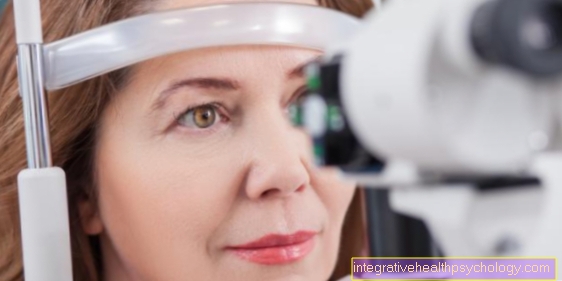
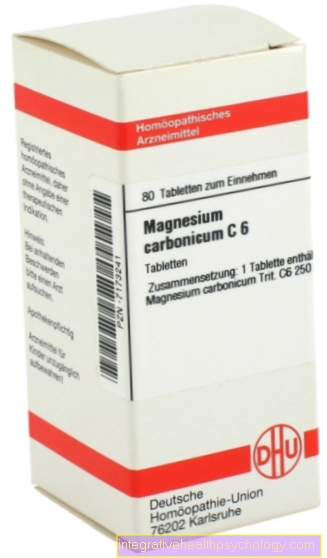
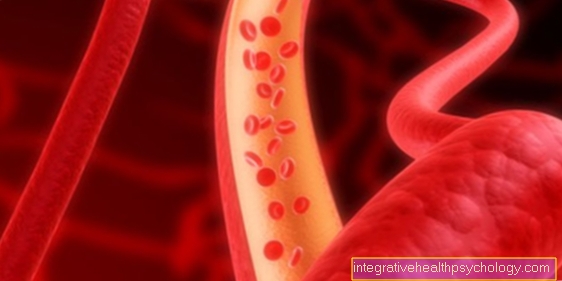
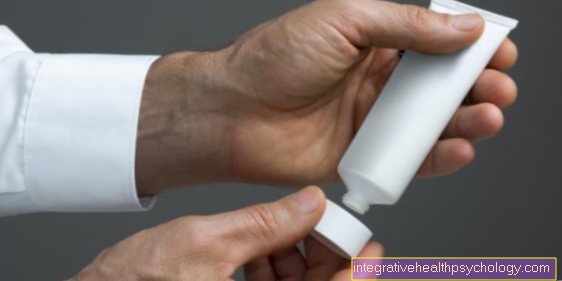

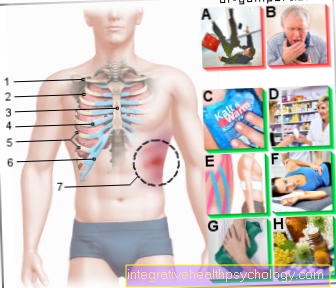


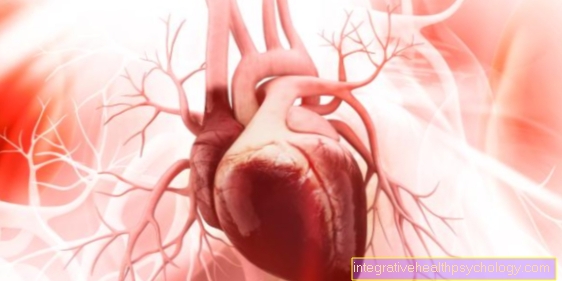

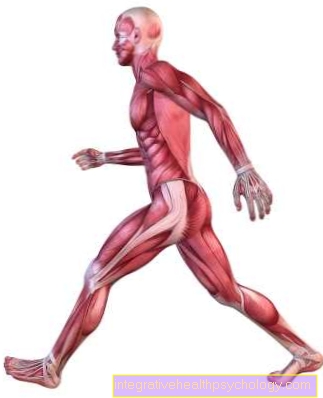


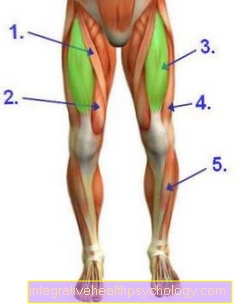

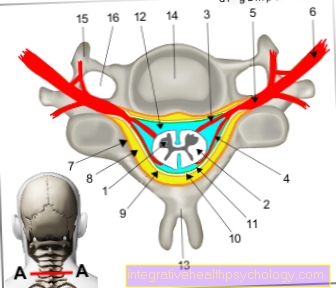
-mit-skoliose.jpg)
